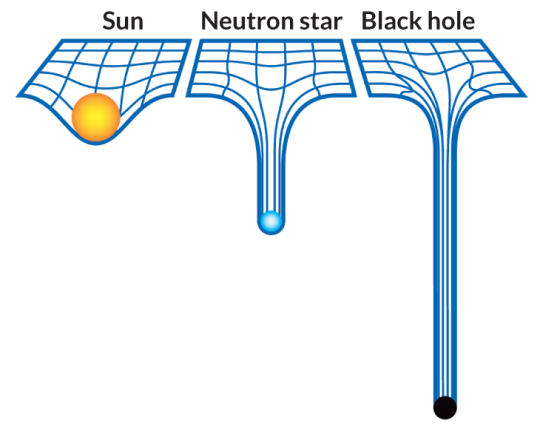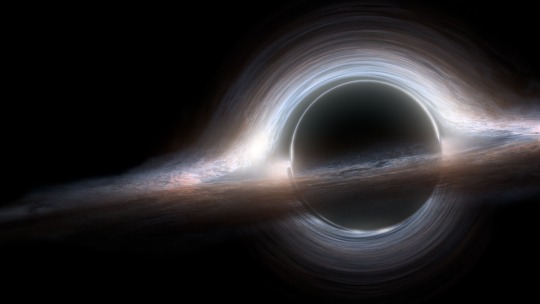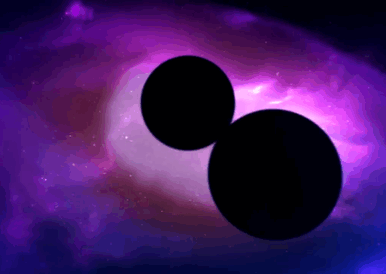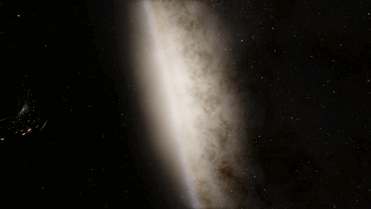#horizontedeeventos
Video
youtube
Horizonte de Eventos - Episódio 57 - Luas Irregulares do Sistema Solar
Fonte: https://www.spreaker.com/user/horizontedeeventos/hde-57-luas-irregulares-do-sistema-solar E no programa de hoje vamos falar sobre satélites naturais do nosso Sistema Solar, mas um tipo peculiar desses satélites, ou luas, vamos falar sobre as luas irregulares do Sistema Solar, luas que não são muito comentadas, são esquecidas, por serem pequenas, mas são de crucial importância e guardam os segredos da formação do nosso Sistema Solar.
0 notes
Photo






Karl Schwarzschild
He provided the first exact solution to the Einstein field equations of general relativity, for the limited case of a single spherical non-rotating mass, which he accomplished in 1915, the same year that Einstein first introduced general relativity. The Schwarzschild solution, which makes use of Schwarzschild coordinates and the Schwarzschild metric, leads to a derivation of the Schwarzschild radius, which is the size of the event horizon of a non-rotating black hole.
Schwarzschild accomplished this while serving in the German army during World War I. He died the following year from the autoimmune disease pemphigus, which he developed while at the Russian front. Various forms of the disease particularly affect people of Ashkenazi Jewish origin.
Asteroid 837 Schwarzschild is named in his honour, as is the large crater Schwarzschild, on the far side of the moon. (source) (biography) (more)
#schwarzchildradius#karlschwarzchild#blackhole#buraconegro#physics#fisica#astrofisica#astrophysics#eventhorizons#horizontedeeventos#space
2K notes
·
View notes
Photo

The Ripples in Space-Time Designed by Worm Holes In Lead to Other Universes . In June 2018 a team of physicists explored the possibility that black holes 'observe' in nature are not like that, but some kind of exotic compact objects (the acronym in English, ECOs) that do not have a horizon events. Scientific collaborations LIGO and Virgo detect gravitational waves from black holes two mergers, ushering in a new era in the cosmos of the study. But what if these ripples in space-time were produced by wormholes that can be traversed to access another universe? Pablo Bueno, the KU Leuven University (Belgium), said: Wormholes have no event horizon, but act as a space-time shortcut that can be crossed; a kind of very long neck that leads to another universe. Confirmation of echoes in the LIGO or Virgo signs would be a virtually irrefutable evidence that astrophysical black holes do not exist. Time will tell if these echoes exist or not. If the result is positive, it would be one of the greatest discoveries in the history of physics. #blackhole #buraconegro #space #espaço #paralleluniverse #universosparalelos #horizontedeeventos #eventhorizon #ciencia #science #wormhole #buracodeminhoca #omg #wtf #wow (at KU Leuven) https://www.instagram.com/p/Bxu24dGA_Dm/?igshid=1uzpr2apejhtg
#blackhole#buraconegro#space#espaço#paralleluniverse#universosparalelos#horizontedeeventos#eventhorizon#ciencia#science#wormhole#buracodeminhoca#omg#wtf#wow
0 notes
Text
Horizonte de Eventos - Episódio 11 - Missão TRIDENT Para Tritão
Horizonte de Eventos – Episódio 11 – Missão TRIDENT Para Tritão
Source:
https://www.spreaker.com/user/horizontedeeventos/he-11-mixagem
ENTRE NA COMUNIDADE SPARKLE DO SPACE TODAY NO HOTMART:
https://sparkle.onelink.me/twwu/spacetoday
——————————————————————–
VISITE A LOJA DO SPACE TODAY:
https://www.spacetodaystore.com
——————————————————————–
SEJA MEMBRO DO SPACE TODAY E AJUDE COM A CRIAÇÃO DE…
View On WordPress
0 notes
Video
instagram
Aperta o play, que é vídeo! A @biguniverso volta às origens ligadas à astronomia e cria uma coleção inspirada em fenômenos espaciais. A novidade é a coleção “Horizonte de Eventos” Que chegou hoje aqui para demonstração e Resenha no Coisas de Menininha! Aguardem muuuuuuitas Fotos!!! #eubrilhobig #coisasdemenininha #biguniverso #horizontedeeventos
0 notes
Text
Horizonte de Eventos - Episódio 20 - Apollo 1 - The Fire
#acidente#apollo1#astrofísica#astronomia#astronáutica#cosmologia#edwhite#escotilha#espaço#hatch#horizontedeeventos#incêndio#nasa#oxigêniopuro#pureoxigen#rogerchaffee#spacetoday#spacetodaytv#thefire#virgilgusgrissom
1 note
·
View note
Text
Black holes
A black hole is a region of spacetime exhibiting such strong gravitational effects that nothing—not even particles and electromagnetic radiation such as light—can escape from inside it. The theory of general relativity predicts that a sufficiently compact mass can deform spacetime to form a black hole. The boundary of the region from which no escape is possible is called the event horizon. Although the event horizon has an enormous effect on the fate and circumstances of an object crossing it, no locally detectable features appear to be observed. In many ways a black hole acts like an ideal black body, as it reflects no light.

The idea of a body so massive that even light could not escape was briefly proposed by astronomical pioneer and English clergyman John Michell in a letter published in November 1784. Michell's simplistic calculations assumed that such a body might have the same density as the Sun, and concluded that such a body would form when a star's diameter exceeds the Sun's by a factor of 500, and the surface escape velocity exceeds the usual speed of light.

At the center of a black hole, as described by general relativity, lies a gravitational singularity, a region where the spacetime curvature becomes infinite. For a non-rotating black hole, this region takes the shape of a single point and for a rotating black hole, it is smeared out to form a ring singularity that lies in the plane of rotation. In both cases, the singular region has zero volume. It can also be shown that the singular region contains all the mass of the black hole solution. The singular region can thus be thought of as having infinite density.

How Do Black Holes Form?
Scientists think the smallest black holes formed when the universe began.
Stellar black holes are made when the center of a very big star falls in upon itself, or collapses. When this happens, it causes a supernova. A supernova is an exploding star that blasts part of the star into space.

Scientists think supermassive black holes were made at the same time as the galaxy they are in.
Supermassive black holes, which can have a mass equivalent to billions of suns, likely exist in the centers of most galaxies, including our own galaxy, the Milky Way. We don't know exactly how supermassive black holes form, but it's likely that they're a byproduct of galaxy formation. Because of their location in the centers of galaxies, close to many tightly packed stars and gas clouds, supermassive black holes continue to grow on a steady diet of matter.

If Black Holes Are "Black," How Do Scientists Know They Are There?
A black hole can not be seen because strong gravity pulls all of the light into the middle of the black hole. But scientists can see how the strong gravity affects the stars and gas around the black hole.
Scientists can study stars to find out if they are flying around, or orbiting, a black hole.

When a black hole and a star are close together, high-energy light is made. This kind of light can not be seen with human eyes. Scientists use satellites and telescopes in space to see the high-energy light.

On 11 February 2016, the LIGO collaboration announced the first observation of gravitational waves; because these waves were generated from a black hole merger it was the first ever direct detection of a binary black hole merger. On 15 June 2016, a second detection of a gravitational wave event from colliding black holes was announced.

Simulation of gravitational lensing by a black hole, which distorts the image of a galaxy in the background
Animated simulation of gravitational lensing caused by a black hole going past a background galaxy. A secondary image of the galaxy can be seen within the black hole Einstein ring on the opposite direction of that of the galaxy. The secondary image grows (remaining within the Einstein ring) as the primary image approaches the black hole. The surface brightness of the two images remains constant, but their angular size varies, hence producing an amplification of the galaxy luminosity as seen from a distant observer. The maximum amplification occurs when the background galaxy (or in the present case a bright part of it) is exactly behind the black hole.
Could a Black Hole Destroy Earth?
Black holes do not go around in space eating stars, moons and planets. Earth will not fall into a black hole because no black hole is close enough to the solar system for Earth to do that.

Even if a black hole the same mass as the sun were to take the place of the sun, Earth still would not fall in. The black hole would have the same gravity as the sun. Earth and the other planets would orbit the black hole as they orbit the sun now.
The sun will never turn into a black hole. The sun is not a big enough star to make a black hole.
More posts about black holes
Source 1, 2 & 3
#blackhole#buraconegro#space#espaço#universo#universe#astrophysics#astrofisica#astronomy#astronomia#horizontedeeventos#singularity#singularidade#earth#terra#cosmos#einstein
8K notes
·
View notes
Text
Horizonte de Eventos - Episódio 27 - 60 Anos do Voo de Yuti Gagarin
#astofísica#astronautics#astronomia#astronáutica#gagarin#histórico#homemnoespaço#horizontedeeventos#primeirohomemnoespaço#spacetoday#spacetodaystore#voo#vostok1#yuri
0 notes
Text
Horizonte de Eventos - Episódio 21 - Challenger - O Acidente
#acidente#astrofísica#astronomia#astronáutica#challenger#espaço#horizontedeeventos#nasa#spacetoday#teacherinspace#universo#ônibusespacial
0 notes
Text
Horizonte de Eventos - Episódio 19 - Contagem de Crateras E Buraco Negro Intermediário
#astrofísica#astronomia#astronáutica#buraconegro#buraconegrointermediário#ciênciaplanetária#contagem#cosmologia#crateras#espaço#geologiaplanetária#horizontedeeventos#podcast#spacetoday#spacetodaytv#universo
0 notes
Text
Horizonte de Eventos - Episódio 8 - 2019 - O Segundo Ano Mais Quente da História
#aquecimentoglobal#astrofísica#astronomia#astronáutica#cosmologia#espaço#horizontedeeventos#mudançaclimática#nasa#noaa#relatório#segundoanomaisquentedahistoria#spacetoday#spacetodaytv#terra#universo
0 notes
Text
Horizonte de Eventos - Episódio 7 - Betelgeuse Vai Explodir?
#astrofísica#astronomia#astronáutica#betelgeuse#cosmologia#espaço#estrela#estrelavariável#explosão#horizontedeeventos#spacetoday#spacetodaytv#star#supergigantevermelha#universo
0 notes
Text
Horizonte de Eventos - Episódio 7 - Betelgeuse Vai Explodir?
#astrofísica#astronomia#astronáutica#betelgeuse#cosmologia#espaço#estrela#explosão#horizontedeeventos#spacetoday#spacetodaytv#supernova#universo#variaçãobrilho
0 notes
Text
Horizonte de Eventos - Episódio 6 - Vikram É Encontrado na Lua
#astrofísica#astronomia#astronáutica#chandrayaan2#cosmologia#espaço#horizontedeeventos#lua#sistemasolar#spacetoday#universo#vikram#índia
0 notes
Text
Horizonte de Eventos Episódio 10 - Missão Para Urano e Netuno
Horizonte de Eventos Episódio 10 – Missão Para Urano e Netuno
Source:
https://www.spreaker.com/user/horizontedeeventos/he-ep-10-missao-aos-gigantes-congelados
ENTRE NA COMUNIDADE SPARKLE DO SPACE TODAY NO HOTMART:
https://sparkle.onelink.me/twwu/spacetoday
——————————————————————–
VISITE A LOJA DO SPACE TODAY:
https://www.spacetodaystore.com
——————————————————————–
SEJA MEMBRO DO SPACE TODAY E…
View On WordPress
0 notes
Text
Resumo Astronômico Semanal - SpaceX, Oumuamua e Exoplaneta Parecido Com a Terra
Resumo Astronômico Semanal – SpaceX, Oumuamua e Exoplaneta Parecido Com a Terra
Source:
https://www.spreaker.com/user/horizontedeeventos/he-ep-09-ras-01
Nesse episódio vamos testar um novo tipo de programa, um resumo dos principais acontecimentos da astronomia e da astronáutica ocorridos na última semana. E nesse episódio vamos falar da SpaceX e uma semana agitada na empresa, vamos falar do nosso primeiro…
View On WordPress
0 notes